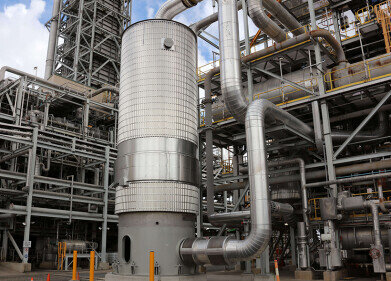Air Clean Up
Improved Air Traffic Control is Key to Cutting Aviation Emissions
Mar 02 2010
The quickest way of cutting aviation emissions is to improve air traffic control, a study has found.
Biofuels could reduce pollution and better technology boost efficiency but neither will have the global impact that improved flight management could achieve, Oxford’s Smith School of Enterprise and the Environment says.
“If you reduced the time aircraft spent waiting to land and taxi, allowed planes to use more direct flight paths and approach routes, and introduced a common air traffic control system, you could cut emissions from aviation by a significant amount,” Dr Chris Carey, the Smith School’s aviation expert believes.
“The inaccuracy of current control systems means planes must be given a wide berth to avoid collisions.
“If that was improved, landing and take offs could be quicker, stacking would be reduced and planes could fly closer together by taking advantage of prevailing winds, just as Concorde did.”
The Smith School study says a range of measures including better air traffic control could cut aviation emissions by up to 95 per cent in the long term.
Reducing drag will play a large part, but the lifetime of aircraft means it will be decades before planes with relocated engines, for example, are operating.
“You could also improve efficiency by smoothing aircraft surfaces, much like racing cyclists shave their legs,” Dr Carey said.
“But none of those measures can be introduced quickly and most new technology is not retrofitable. These are all long-term innovations that we won’t see for at least 30 years.”
Test flights with biofuels, notably a Virgin Atlantic flight in 2008, have taken place but the report warns that biofuels are controversial because farmland or carbon-storing forests have been sacrificed to grow fuel crops such as palm oil.
Algae have more potential because cultivation does not use arable land but while fuel production from algae works well in the lab, the yield outside is reduced because of contamination by other algae and dirt.
Similarly, the potential of synthetic fuels, made from coal for example, will be of “minimal” benefit because “the process is heavily carbon intensive,” the Smith School report says.
And safety concerns largely rule out nuclear. “As the issue of ground-based nuclear power for electricity generation faces considerable opposition in the public sphere, one can only postulate on the level of opposition to nuclear powered aircraft...Nuclear power in aviation is unlikely in the foreseeable future.”
Aviation uses 13 per cent of transport fuel worldwide and is responsible for between 2% and 3% of global CO2 emissions. The IPCC says this figure will rise to between 5% and 15% per cent in 2050 or even higher if other sectors cut their emissions.
Furthermore, aircraft do 2-4 times more damage than those figures suggest because of the effect of altitude.
“The most obvious target for improving efficiency in aviation is engines, the source of emissions,” Dr Carey says. “But major technological innovations are a massive financial risk because you could be making a plane that no-one’s going to buy.
“On the other hand, improving airport access and flight management would work much sooner because fleet lifetime wouldn’t be a problem.
“These are the low-hanging fruit compared to technology improvements and existing biofuels, and are measures that governments could make a condition of using their airspace.
“They should be implemented as soon as possible if we are serious about cutting aviation emissions.”
Events
IWA World Water Congress & Exhibition
Aug 11 2024 Toronto, Canada
Aug 25 2024 Stockholm, Sweden and online
Sep 03 2024 Mexico City, Mexico
Sep 03 2024 Mexico City, Mexico
Sep 03 2024 San Diego, CA, USA














